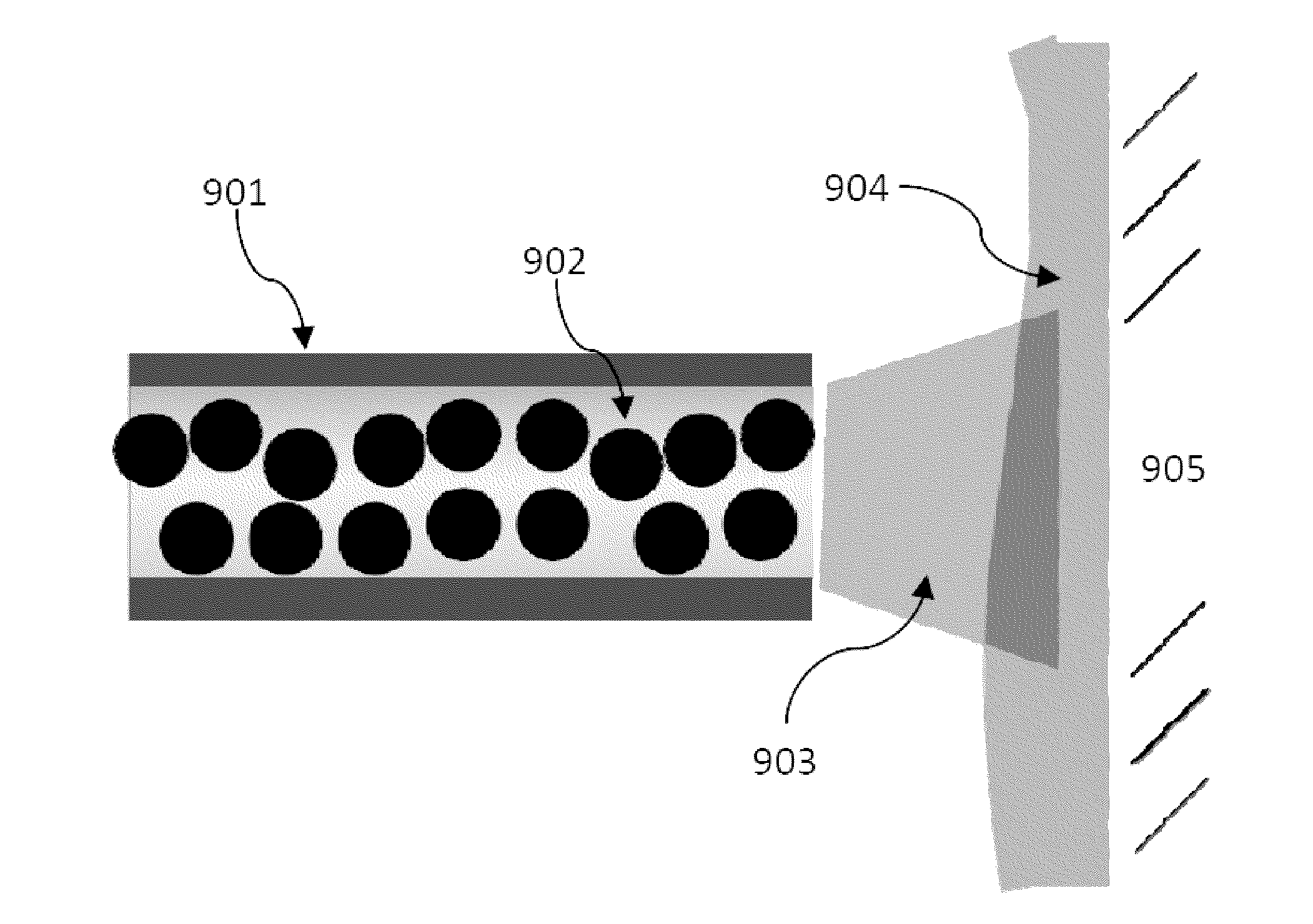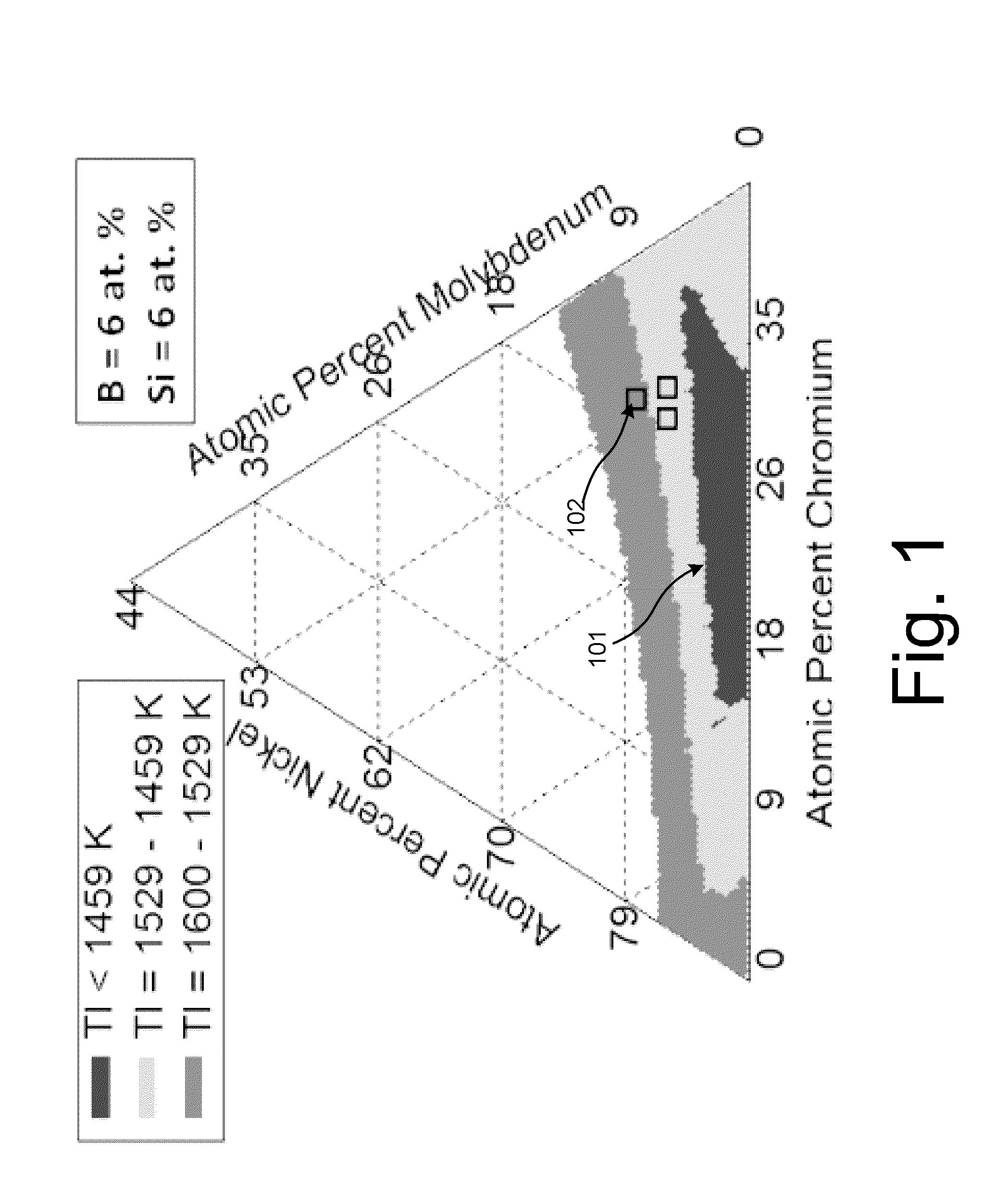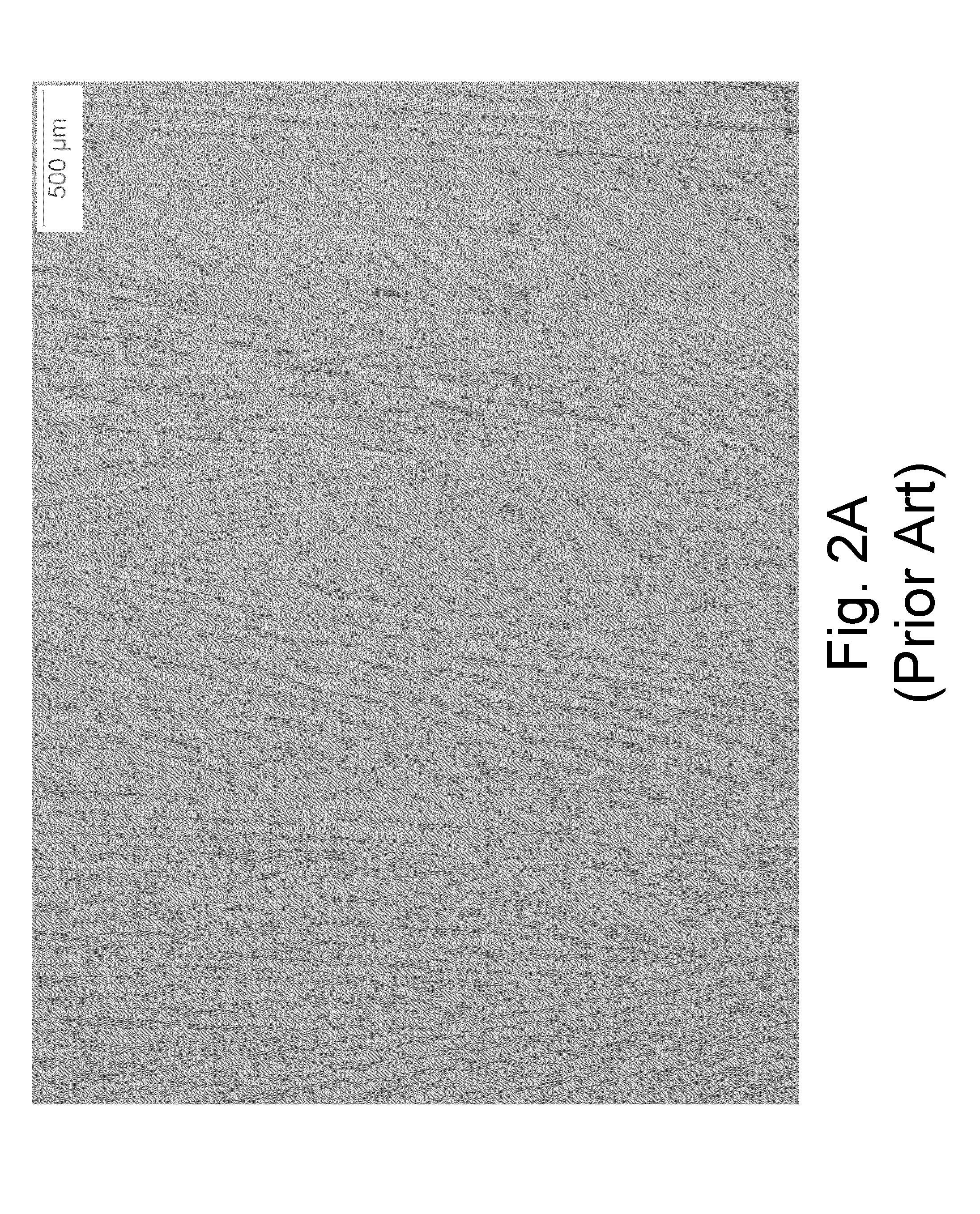Fine grained ni-based alloys for resistance to stress corrosion cracking and methods for their design
a technology of stress corrosion cracking and fine grain, applied in the direction of manufacturing tools, solvents, transportation and packaging, etc., can solve the problems of common failure in applications, reduced corrosion performance of weld metal with increasing concentration, etc., to improve stress corrosion cracking resistance, improve productivity, and reduce dilution.
- Summary
- Abstract
- Description
- Claims
- Application Information
AI Technical Summary
Benefits of technology
Problems solved by technology
Method used
Image
Examples
example 1
[0042]Manufacture of Wire of Alloy 9, using a sheath material composed of Alloy 11. Alloy 11 has a calculated melting temperature of 1429 K (1155° C.) roughly 200° C. below the melting temperature of Inconel 622 (Tm—1351-1387° C.) and 200° C.-300° C. below the melting temperature of pure Nickel and Ni—Cr alloys Tm=1345-1455° C.). The melting temperature of Inconel 622 is relevant as that is a common feedstock used in solid wire cladding. The melting temperature of pure Nickel and Ni—Cr alloys is relevant in that it is the sheath material used in the manufacture of Ni—Cr—Mo cored wires. Thus, the Alloy 11 sheath requires less heat input during the welding process and will provide the advantage of lower process dilution and higher productivity over the other conventional solutions (solid Inconel 622 wire, cored wire of Ni or Ni—Cr sheath). The powder feedstock in this manufacturing example is a mixture of Ni—Cr, Ni—Mo, Ni—B, Ni—Si, B, and Si powder components such that when alloyed to...
PUM
| Property | Measurement | Unit |
|---|---|---|
| grain lengths | aaaaa | aaaaa |
| weight percent | aaaaa | aaaaa |
| weight percent | aaaaa | aaaaa |
Abstract
Description
Claims
Application Information
 Login to View More
Login to View More - R&D
- Intellectual Property
- Life Sciences
- Materials
- Tech Scout
- Unparalleled Data Quality
- Higher Quality Content
- 60% Fewer Hallucinations
Browse by: Latest US Patents, China's latest patents, Technical Efficacy Thesaurus, Application Domain, Technology Topic, Popular Technical Reports.
© 2025 PatSnap. All rights reserved.Legal|Privacy policy|Modern Slavery Act Transparency Statement|Sitemap|About US| Contact US: help@patsnap.com



